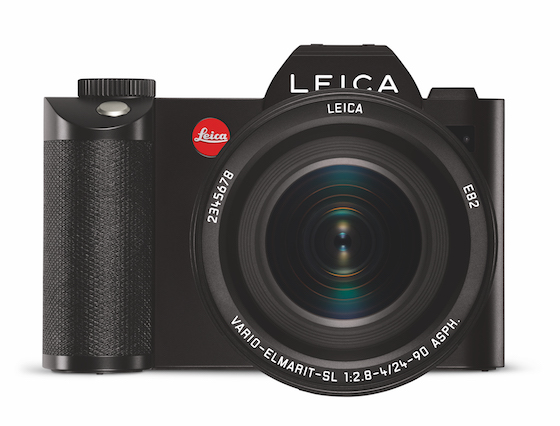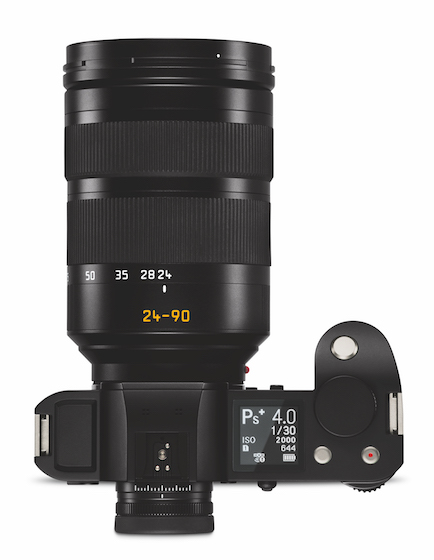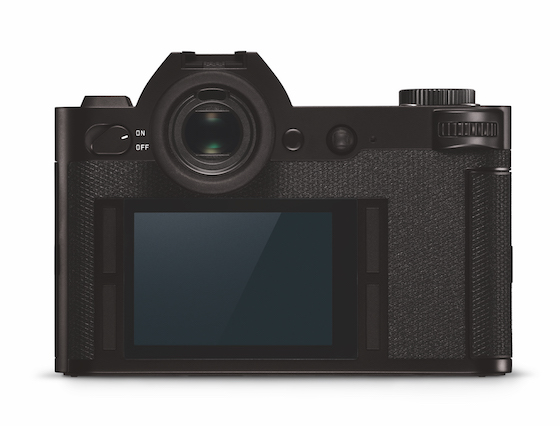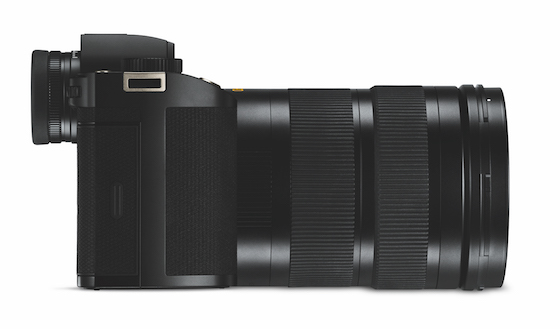We all knew about it already, but now it’s official: Leica has launched its first modern full-frame mirrorless system, the Leica SL. It is a system that targets professional photographers, having been built to deliver the best performance on the market (at least on paper).
The design might look similar to the A7 series from Sony, but the truth is that it was inspired by the Leicaflex, which was the first 35mm SLR manufactured by Leitz. The camera is quite large and weighs 900g with the battery included. It is fully weather sealed and forged from a block of solid aluminium. The design is simple and minimalistic much like other recent Leica cameras such as the Q.

The camera also has one feature that has long been requested by professional photographers who use mirrorless cameras and that is a dual SD card slot.
This is perhaps the one detail that more than anything else shows that this cameras is targeting professionals. The camera is also compatible with UHS II standard.
On top we notice an LCD panel similar to the ones found on high-end DSLRs. It is very useful to check your main settings at a glance. The SL becomes the second mirrorless camera with such a solution after the Samsung NX1. There are also two buttons (one is for movie recording and the other is probably a function button) and one dial.

On the rear the button layout is similar to the flagship Leica S medium format camera. There are 4 rectangular buttons around the LCD screen that are used to activate the different menus. If you press and hold them, you can activate customisable functions instead. We also get a second dial that will change the exposure settings.
One of the most interesting features is the viewfinder, the biggest electronic viewfinder on a mirrorless camera.
The impressive specs include a size of 0.66”, 0.8x magnification and a SXAG resolution of 4.4 million dots which is higher than the one on the Leica Q. The LCD screen is a 3” type with touch sensitive capabilities and anti-scratch coating.

Inside we get the same 24MP CMOS sensor already seen on the Leica Q with an ISO range of 50-50000 and no Low Pass filter. The autofocus has 49 contrast detection points and it is likely to be the same as the one on the Q once again. Actually Leica says it has the fastest AF of all full-frame mirrorless cameras (meaning it is faster than the Sony A7 series). The camera can shoot at 11fps and has a 2GB buffer memory that can capture 30 DNG (Raw) files in a single burst.
Finally, there are also a lot of interesting video specs. The SL can record 4K up to 30fps, and Full HD up to 120fps. It has a Vlog profile, and a Multipart to plug in a Mic input and Headphone output adapter (3.5mm Jack type). It can also output a 10 bit 4:2:2 signal via HDMI. Note that the HDMI is a full size connector.

The camera has a new L mount and three lenses have been announced along with the camera:
- VARIO-ELMARIT-SL 24–90 mm f/2.8–4 ASPH
- APO-ELMARIT-SL 2.8-4/90–280mm
- SUMMILUX-SL 50 mm f/1.4 ASPH.
Only the 24-90mm will be available with the camera in mid-November while the other lenses will be released later on. I have to say that this is a very smart set of focal lengths to start with. With these three lenses, users will have almost everything they need. Not bad for a completely new system. Leica also designed updaters for its S, R and M lenses making this SL the most versatile camera within its own system.
If you’ve read everything up until now, it really looks like this camera has everything you could possibly ask for. However there is a big caveat and that is (once again) the price. At $7450 for the body and $4950 for the 24-90mm f/2.8, you are looking at a $12400 price tag! Considering that the Leica SL is the first real competitor for the A7 series, that Sony has released 7 full frame cameras in less than 2 years, and that the most expensive model costs $3000, it looks like the SL is designed more for a high-end niche of users. But I won’t say more until we can actually test it!
We will have the chance to see and test the new Leica SL two days from now, so be sure to follow us. If you have any questions, feel free to leave us a comment below and we’ll try to answer it on Thursday!
